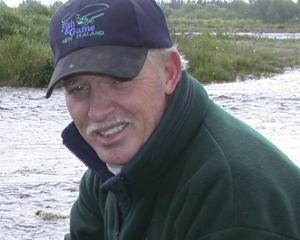"We are not going to sit by and be beaten by people who start operations only because we have been successful here," colony manager Jason Gaskill told the Waitaki District Council which, through the Waitaki Development Board, owns and operates the facility.
The colony had 81,128 visitors in the last financial year.
Last year, the colony clarified its vision, particularly long-term, to be more sustainable and become more than just a place to see penguins.
It wants to be an environmental facility and also establishing itself as a world leader in penguin research.
It has already started that with a three-year research project by its resident marine biologist, Philippa Agnew, which could help predict future population trends of the species.
To monitor sea journeys to feed, penguins have been fitted with a GPS device and time-depth recorders, producing data for studying the foraging behaviour of the blue penguins in relation to their breeding and population biology.
That project is attracting world-wide attention, already resulting in expressions of interest from students wanting to study at the colony.
Initial predictions on population growth indicate there is enough space for about two and a-half years.
Beyond that, the layout of the nesting area will have to be modified.
In the 2009-10 breeding season, penguins laid 465 eggs and 332 chicks were fledged.
Mr Gaskill described the colony as "unique" in the world, one of only a few that provided what it provided at a "very cheap" cost to visitors.
"We are the only facility that allows visitors to get into the native breeding habitat and see penguins in their burrows. We are getting more than 14,000 day visitors a year, some of whom have come halfway around the world, and are more than willing to pay $10 to $12 because they are guaranteed to see a penguin," he said.
That level of access had been provided in consultation with the Department of Conservation.
Day viewing was introduced in 2006 to complement the night-time viewing from a 350-seat stand of penguins coming ashore to return to their nests.
Night viewing was now more interactive. rather than lecturing visitors.
The new vision would now put more emphasis on what the colony had to offer.
Mr Gaskill said other initiatives included. -
- Expanding the visitors' centre retail area.
- Personalising souvenirs to the colony itself, so it did not compete against other retailers in Oamaru. That should be completed by the end of the year.
- Improving environmental performance.
- Improving external communications with the community, tour agents and suppliers.
- Improving relationships with stakeholders, including the Department of Conservation and Historic Places Trust.
- Working on improving special offers for local residents in recognition the colony is community-owned.
- Funding research out of its own operating budget.
Penguin colony history
• 1992: After much debate about the penguins and the quarry, it was decided to clean the area out as a breeding habitat.
• 1993: Managed by a team of volunteers.
• 1994: Two people employed as full time guides and for penguin welfare monitoring.
• 1997: Waitaki Development Board took over the colony and a Penguin Protection Advisory Committee formed.
• 2001: Visitors' centre opened2002: 350 seat grandstand completed2006: Visitors' centre extended to provide an interpretation area for day tours.
• 2009: Expanded day tours by installing trail into colony.






